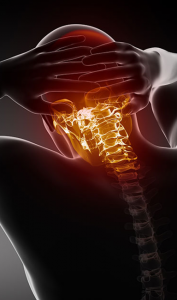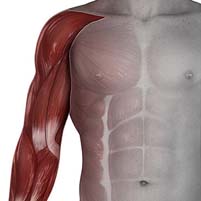Believe it or not, but this has nothing to do with swallowing or bronchitis. Jokes aside, an injury to the brachial plexus can cause severe pain, numbness, burning, tingling, stabbing or shooting sensations down the arm. These symptoms are to injury of the nerves. The nerves of the arm originate from the brachial plexus.

What does the Brachial Plexus do?
Nerves are like power cables within our bodies. They supply “electricity” to allow our muscles to move. These electrical impulses travels in both directions. Information travels from the periphery (fingers and toes) to your brain. This “return route” is a complicated network of nerves.
What is the Brachial Plexus?
The brachial plexus is the nervous network of the arms, one plexus on each side. The brachial plexus consists nerve roots (the part where the nerve exits the spinal cord) C5, C6, C7, C8 & T1. These five nerve roots merge and divert to form the brachial plexus. A plexus is like a train station, where a lot of different routes come together and then split apart again. The brachial plexus splits to form three peripheral (serving the extremities) nerves that supply the entire arm. The median, radial and ulnar nerves.
How does a Brachial Plexus injury happen?
Any trauma to the plexus can cause injury to the nerves. Trauma can include compression, traction (stretching) or severing (ripping apart).

Compression injuries:
- Tumors
- Inflammation
- Prolonged position which leads to decreased blood flow to the nerves
Traction injuries:
- Fall
- Birth injury (excessive bend of neck)
- Contact sport (rugby scrum)
- Motor vehicle accidents
Severing injuries:
- Knife wound
- Gunshot
Causes of Brachial Plexus Injuries
The most common brachial plexus injury is due to traction or stretching. The severity of the symptoms will be determined by what happened (traction, compression or severing) to what part of the plexus.
The upper part of the plexus (nerve roots C5 & C6) can be injured when the head is forced away from the shoulder (worse when the joint is forced down too). This will happen when you fall directly on the shoulder, and then your head bends in the opposite direction.
The lower part of the brachial plexus (nerve roots C8 & T1) will be injured when your arm is forced above your head. This can happen if you slip while climbing and then grab hold of a rock or tree branch. The weight of the body jerks through the shoulder to the neck.

Symptoms of Brachial Plexus Injuries
The severity AND the location of your injury will determine your symptoms. It therefor varies greatly from person to person. A injury leads to decrease in nerve function. This includes the ability to use the muscles to move the fingers, wrist and hand, the power of your grip, and sensation.
Minor
- Numbness
- Decreased power that goes away within a few minutes
- Pain
Moderate
- Severe pain
- Loss of sensation
- Inability to move the shoulder, elbow, wrist or hand
Self Test
If you experienced a traumatic injury and suffer with pain, numbness or loss of power down your arm, you may have injured the brachial plexus. You can try this test at home:
- Sit comfortably on a chair with your back supported
- Keep your eyes directed forward
- Drop your ear to your affected shoulder
- Slowly bring your head back to centre, this is how the unaffected side feels
- Now you compare by dropping your ear toward the unaffected shoulder
- If you experience sharp or shooting pain down your arm you may have injured your brachial plexus
How bad is it?
The most severe injury, worst-case scenario, is an entirely severed nerve. A knife or gunshot wound could be the cause of an unfortunate accident. When the nerve is severed your pain may be minimal, but you will have no sensation or movement. After a traumatic episode like this, rehabilitation and treatment will begin after surgical repair.
Any sharp or shooting pain down the arm that does not respond to medication, accompanied by loss of power or sensation, needs urgent assessment. This may indicate a traction/compression injury. In the case of nerve injury, if there is feeling (even if it’s a pain), it means the nerves are functioning.
Even minor symptoms (tingling, numbness or burning) needs assessment.
Diagnosis of Brachial Plexus Injury:
Different tests are used for all the different structures. Your unique injury will determine what tests to do.
Different types of nerve injuries
Neuropraxia (nerve compression)
Let’s say you had a memorable night out and “slept” hugging the loo, your brachial plexus is compressed for the duration of your nap. This causes damage to the rubber lining around your power cable (myelin sheath) because of a decrease in blood supply (ischemia). Luckily the power cable (axon) is intact. This is the least severe injury and will recover fully within 6 weeks. There is temporary loss of movement and sensation.
Axonotmesis
When the power cable (axon) and the rubber lining (myelin sheath) is damaged, it may lead to paralysis and sensory loss. Axonotmesis can heal but takes time. The nerve regenerates at a very slow pace, about 1 mm/day. You will need patience because healing may take up to 2 years. This may happen due to a severe traction injury which less to bleeding around the nerve.
Neurotmesis
Neurotmesis is the most severe injury, due to complete severing of the nerve. This can happen with a very severe traction injury, gunshot wound or knife stab. Recovery is very slow with the potential of permanent damage. A clean chef’s knife vs rusty saw, influences recovery. To bridge the gap between the nerve endings surgery is needed.
X-ray:
X-rays can reveal fractures, if you experienced a traumatic injury.
MRI:
With a MRI we can see the nerves, bones and discs. This is a costly test that can only be ordered by a specialist. It will be done if you experience numbness and paralysis.
Sonar (Diagnostic Ultrasound):
With a sonar we can see the nerve and any possible areas of compression.
Nerve conduction study:
A neurologist can perform a nerve conduction study to assess the function of the nerve. This is a painful procedure. Needles are inserted and electrical impulses are sent through the nerve.
How we test it:
We can assess the function of your nerves by testing your sensation, power and reflexes. We also test the nerve’s sensitivity to movement with neurodynamic tests. These tests allow us to determine the severity of your injury. If you need to consult with a specialist we are able to send you in the right direction.
Why is my pain not going away?
In the case of a minor injury, that may have happened a few months or years ago, you may experience flare ups of pain with no cause. This is most commonly due to protective muscle spasm around the injured nerves which restricts the nerve’s ability to move and glide freely. Let us help you to work on this restriction and encourage, happy, pliable nervous structures in your arm.
What makes Brachial Plexus Injuries worse
- Excessive stretching
- Carrying heavy loads (groceries, handbags, kids)
Physio treatment for Brachial Plexus Injury:
Your treatment is focussed on the injured nerves. Nerve mobilisations will be important, getting rid of protective muscle spasm, relieving pain and encouraging pain free movement.
Phases of Rehabilitation & Treatment:
1st Phase: Protection & Initial Healing
During this initial phase of treatment we will use joint and nerve mobilisations and electrotherapy to ease your pain. Strapping to immobilise the shoulder or neck if necessary. Small, pain free movement is possible during this phase.
2nd Phase: Intermediate phase
Once your pain has settled, we use deeper techniques, to get full movement back. We use electrotherapy to strengthen the muscles now within the regained movement. Treatment will be less frequent, as you will be able to do most of your exercises at home.
3rd Phase: Final phase
In this final phase all that is left to do is get your power back! Now your pain is under control and your movement is back to normal. Strengthening exercises to practice at home forms the biggest part of your rehab now.
Healing/Recovery Time:
Your recovery time will depend on the extent of your injury and how your respond to rehabilitation. Nerves take a long time to heal. Realistically this process may take 6-8 weeks for a moderate injury. A completely severed nerve can take up to 12 – 18 months of rehabilitation.
Medical management:
This is an extremely painful injury and medication will be necessary. Your GP can prescribe anti inflammatories to decrease neurogenic inflammation around the nerve, analgesics to decrease pain, gabapentin (Lyrica) to aid in decreasing neuronal excitability and sleeping tablets for you to get a good nights’ rest.
An orthotist can prescribe and fit a shoulder sling or neck brace if necessary.
Brachial Plexus Injuries also known as:
- Parsonage Turner syndrome
Surgery of Brachial Plexus Injuries
When the nerve is severed, a plastic surgeon makes use a donor nerve to bridge the gap of the injury.
What else could the pain be?
- Cervical radiculopathy
- Peripheral nerve injury of the median, radial or ulnar nerve


